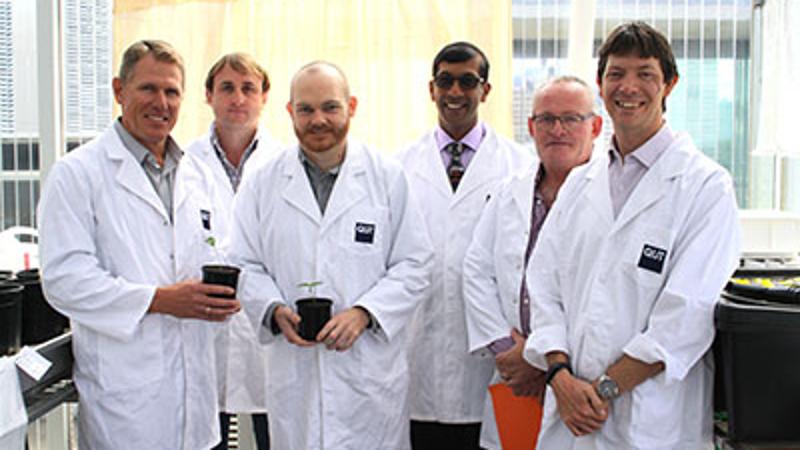
The Australian Mungbean Association is joining forces with QUT and the Queensland Department of Agriculture and Fisheries (DAF) on new research that aims to stop a plant bacteria seasonally affecting significant percentages of our mungbean crop each year.
QUT Centre for Tropical Crops and Biocommodities director Professor Sagadevan Mundree said halo blight disease can cost the mungbean industry millions of dollars annually with effectively no in-crop control measures available to help growers.
“The mungbean industry, now worth $180 million last season, is one of the fastest growing agricultural industries in Australia with the majority of the crop grown in Queensland,” he said.
“Halo blight disease is caused by the bacteria Pseudomonas savastanoi pv. phaseolicola which causes brown water-soaked spots on leaves and pods.
“It can be particularly destructive in spring-sown crops and when it occurs before flowering or during pod development.”
“What we aim to do through innovative research is to gain a deeper understanding of how halo blight infects mungbeans and help develop mungbean varieties that are more genetically resistant to this disease.”
Professor Mundree said while research had been carried out on halo blight in relation to the common bean, research on mungbean has been limited.
He said the Australian Mungbean Association is co-funding a four-year PhD scholarship to help QUT and its collaborators pursue this ground-breaking research.
Professor Mundree said samples of the halo blight bacteria would be provided by DAF along with infected plants from around the nation.
“A range of new screening techniques will be developed to test resistance to the various strains of halo blight bacteria, their relationship with each other and their effects on Australian mungbean varieties,” Professor Mundree said.
“Mungbean reaction to the bacteria will be evaluated and gene for gene interactions between the bacteria and mungbeans uncovered.”
Professor Mundree said this would ultimately assist the development of mungbean varieties more resistant to halo blight.
This new research, coupled with existing drought-tolerance and other mungbean research the university was conducting, will help growers and industry better meet the unprecedented demand for our clean green mungbeans in key export markets.
Other research includes:
- World-first field trials of drought-tolerant mungbeans near Kingaroy where plants are producing far more seeds per gram of biomass with harvest index increasing by 20 per cent.
- A Nested Association Mapping population tool developed in conjunction with DAF has enabled us to genetically map a diverse range of mungbean lines which will assist the breeding of even better mungbean varieties for Australian growers.
- A modelling tool has identified the patterns of environmental stresses that mungbean crops face across Queensland and suggested new ways to address these challenges.
Media contact: Rose Trapnell, QUT media team leader, 07 3138 2361 or 0407 585 901 rose.trapnell@qut.edu.au




